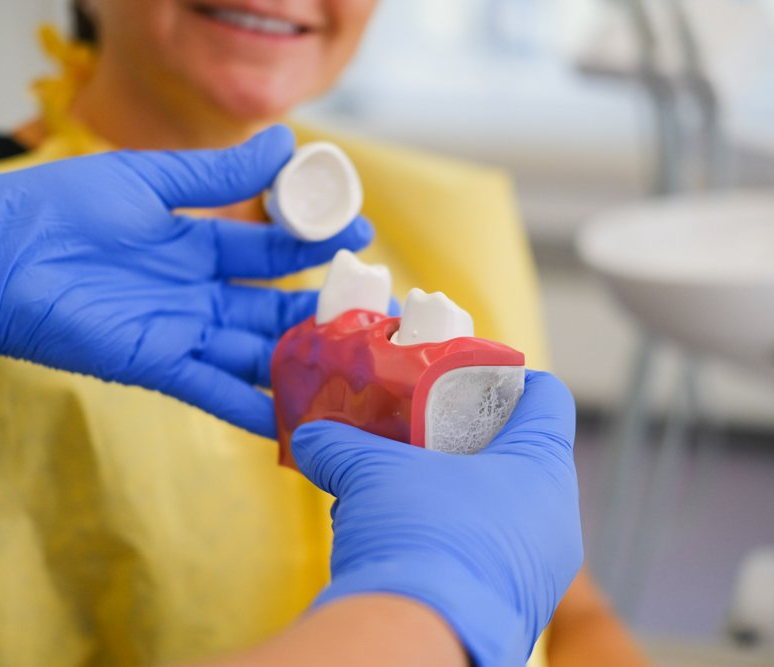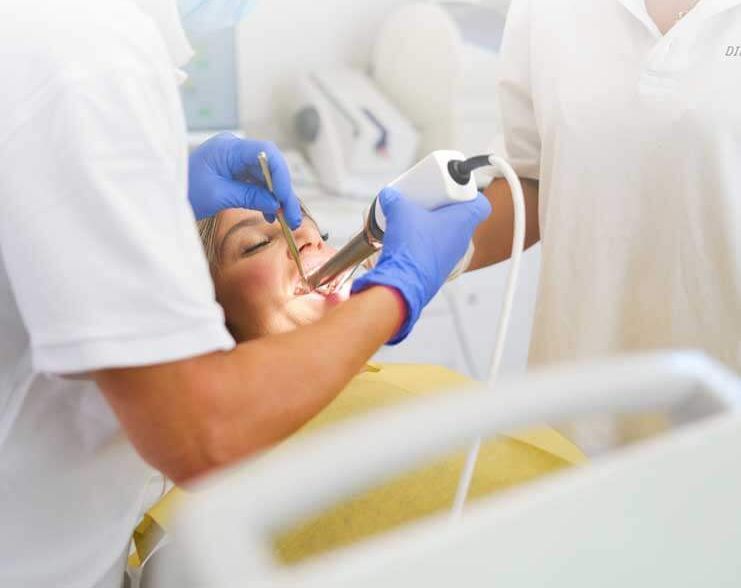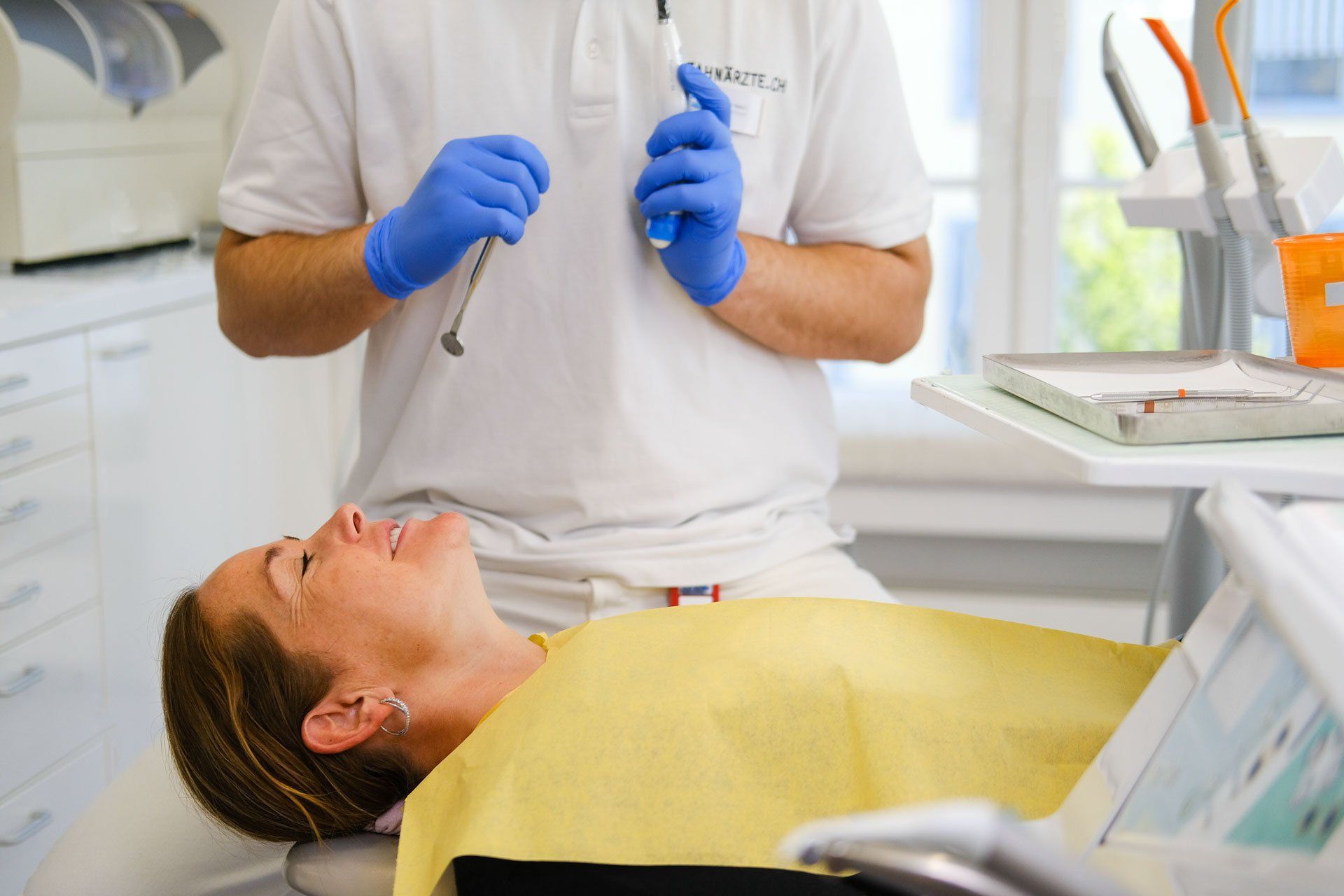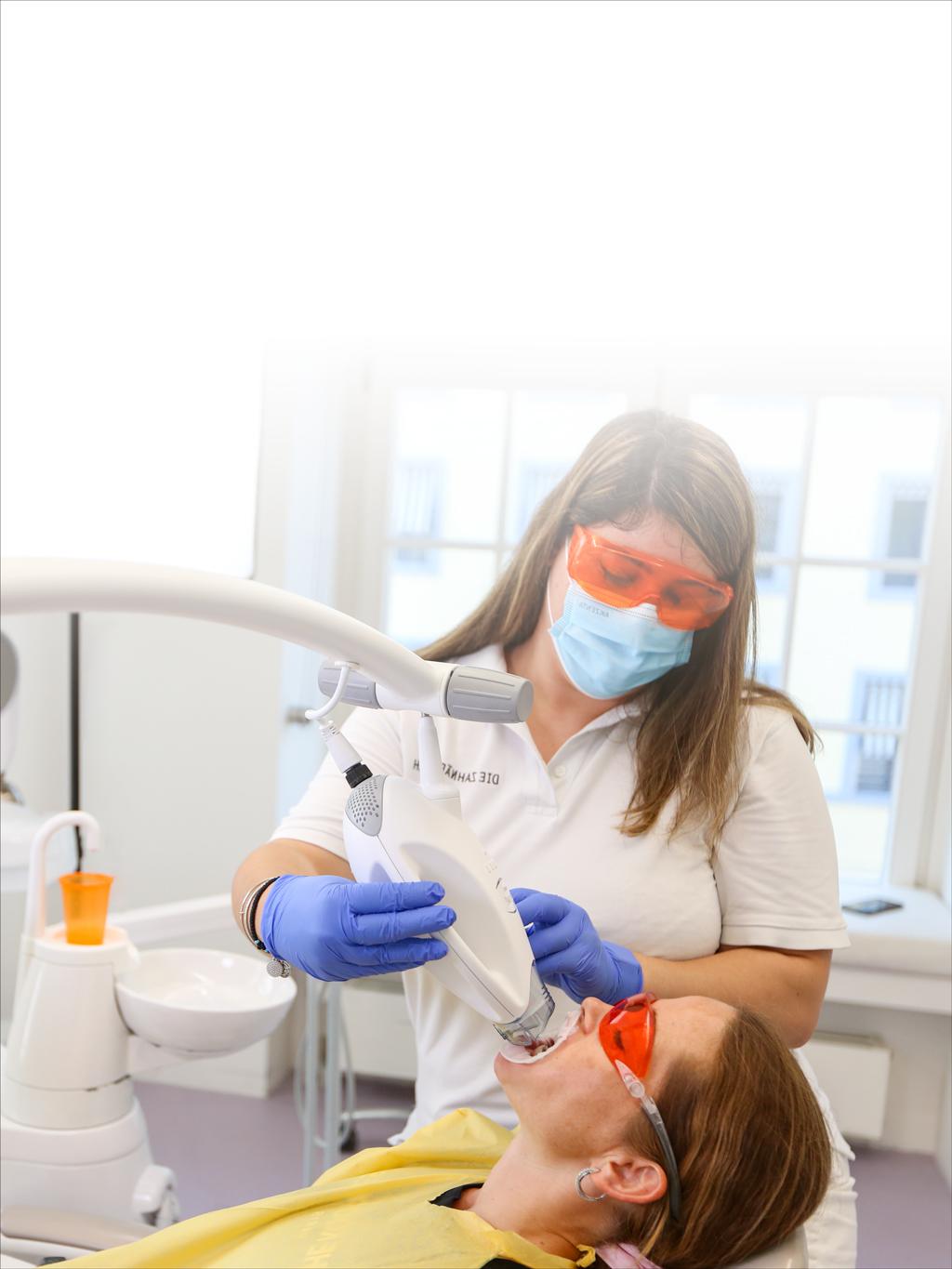Dental Aesthetics Basel: Treatment Options at a Glance
In addition to dentistry, dental aesthetics is an important concern for many patients. In this article, we will show you possible treatment options to enhance your appearance with a beautiful smile.
Teeth Whitening with Bleaching
There are three possible measures for teeth whitening, which differ in terms of materials, procedure, and cost.
- Power Bleaching
- Home Bleaching
- Internal Bleaching
Below, we will introduce each of these methods in detail. The choice of which one to go for primarily depends on individual circumstances.
Power Bleaching
Power Bleaching It is one of the most effective methods for teeth whitening and is exclusively performed directly in the dental office. The great advantage of this treatment lies in its fast and intense effect, which also lasts for a long time.
First, the soft tissue in the mouth is covered with a special protective material to avoid irritation. The dentist then applies a highly concentrated whitening gel to the teeth, which is activated by UV light.
This professional method can significantly whiten tooth discolorations caused by coffee, tea, red wine, or nicotine in just one session. The entire bleaching process usually takes no longer than one to two hours and delivers instantly visible results.
Since the treatment is carried out under professional supervision, it is particularly safe and gentle on the tooth enamel. Power Bleaching is ideal for anyone who wants a radiant smile in a short amount of time.
Home Bleaching
Home Bleaching Home Bleaching is another proven method for teeth whitening that can be conveniently done at home. The dentist first creates a custom-made plastic tray that is precisely tailored to the patient's dental arch. This tray is filled with a special bleaching gel and worn regularly.
Before starting the treatment, patients receive a detailed explanation on the proper use to achieve optimal results and minimize potential risks.
Typically, around 5 to 7 applications are needed to achieve the desired teeth whitening. The exact degree of whitening can be individually adjusted, ensuring that a natural tooth color is maintained.
However, overbleaching—excessive whitening—should be avoided, as it can damage the enamel and make the teeth more sensitive. When used correctly, Home Bleaching offers a gentle and sustainable way to reduce discoloration and achieve a radiant smile.
Internal Bleaching
Internal Bleaching Internal Bleaching is used for stubborn discolorations, particularly in teeth that have darkened after a root canal treatment. Since conventional whitening methods often don't work in these cases, the tooth is whitened from the inside.
For this, the dentist opens the tooth and places a special insert directly into the tooth’s interior. This insert replaces the missing light tooth pulp and ensures an even color. The insert stays in the tooth for several days and may be replaced multiple times until the desired tooth color is achieved.
Internal Bleaching is a proven method to restore discolored teeth to their natural color, and since the whitening is done from the inside, the tooth structure is preserved, resulting in a long-lasting improvement in the aesthetic appearance.
Perfect Aesthetics with Veneers
To conceal aesthetic imperfections of the teeth, ultra-thin, translucent ceramic shells are bonded to the front of the teeth. They are an ideal solution for patients who want to correct discoloration, small gaps between teeth, chipped edges, or slight misalignments.
Relatively low effort
An extensive orthodontic treatment is not necessary with a veneer. The creation of veneers is done individually in the dentist's office. To make space for the ceramic shell, a minimal layer of enamel is first removed.
Manufacturing of custom-made veneers
The dentist then takes an impression, based on which the veneers are custom-made in the dental laboratory. In a second session, the veneers are permanently attached to the teeth using a special adhesive.
Advantages of Veneers
The main advantages of veneers are their natural appearance and high biocompatibility. Additionally, they are highly resistant to discoloration from coffee, tea, or nicotine and reflect light similarly to natural teeth. With proper care, veneers also have a long lifespan of several years.
Aesthetic Corrections with Composites
Composites are modern, tooth-colored filling materials made from a mixture of plastic and fine ceramic particles. They are used for the gentle correction of small tooth defects, chipped edges, or unattractive gaps in dental aesthetics.
Layer-by-layer modeling
The treatment takes place directly in the practice or dental clinic. The material is applied and modeled layer by layer. It is then hardened with special UV light. This way, the teeth can be individually shaped and colored to achieve a natural result.
Durability and Resilience
The high durability and resilience of composites are a major advantage. Since only minimal healthy tooth structure needs to be removed, they are a minimally invasive and cost-effective solution compared to veneers or crowns.
For aesthetic enhancements and minor corrections, composites are the ideal choice due to their versatile applications.
Crowns and Bridges
Crowns and bridges can also restore a natural smile in dentistry. In both cases, however, not only aesthetics but primarily functionality is the focus.
Crowns
Crowns serve to stabilize severely damaged teeth and restore their natural appearance. They encase the entire tooth and are usually made of ceramic. The veneer shell ensures that the dental crown blends harmoniously into the dental arch and cannot be distinguished from the natural tooth.
Bridges
Bridges, on the other hand, are used when one or more teeth are missing. They consist of artificial teeth and are anchored to the neighboring teeth. To securely attach the bridge, these so-called abutment teeth receive crowns. The goal is not only to close the gap but also to restore chewing function.
Durable dental restorations
With crowns and bridges, patients receive highly durable dental restorations. Not only do they look natural, but they are also resistant to staining thanks to modern materials.
Professional teeth cleaning
Professional teeth cleaning (PTC) is an important measure in dentistry and complements daily oral hygiene perfectly. It involves the thorough removal of plaque, tartar, and stains, and is carried out by trained professionals in the dental office.
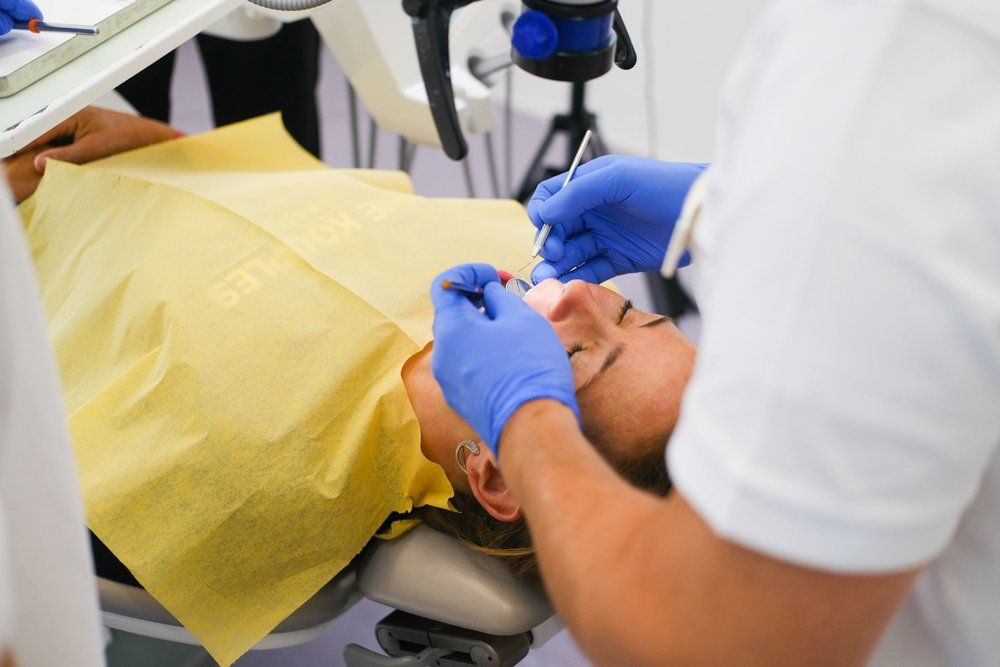
Removal of plaque
Using special instruments or ultrasound, hard and soft plaque is initially removed. Dental floss or fine brushes are then used to clean the spaces between the teeth. A powder spray device is usually employed to remove stains caused by tea, coffee, or nicotine.
Strengthening the enamel and protecting against cavities.
Afterwards, the teeth are polished with a special paste. This makes them smoother, which helps reduce the formation of new deposits. To strengthen the enamel and protect against cavities, a fluoride-based protective coating is applied at the end.
Prevents gum diseases.
In addition to oral health, regular professional teeth cleaning also improves aesthetic appearance. It helps in preventing gum diseases, provides a fresh feeling in the mouth, and gives the teeth a well-maintained look.
Perfect complement to dental care
It is a sensible complement to daily dental care, especially for patients with tooth discoloration. It is recommended to have a professional dental cleaning performed several times a year in a dental clinic or practice.
Conclusion
There is a wide range of treatment options available in Basel to enhance your dental aesthetics with a dentist. It is best to directly clarify with the insurance which costs for these services will be covered.
Wir sind auch hier



